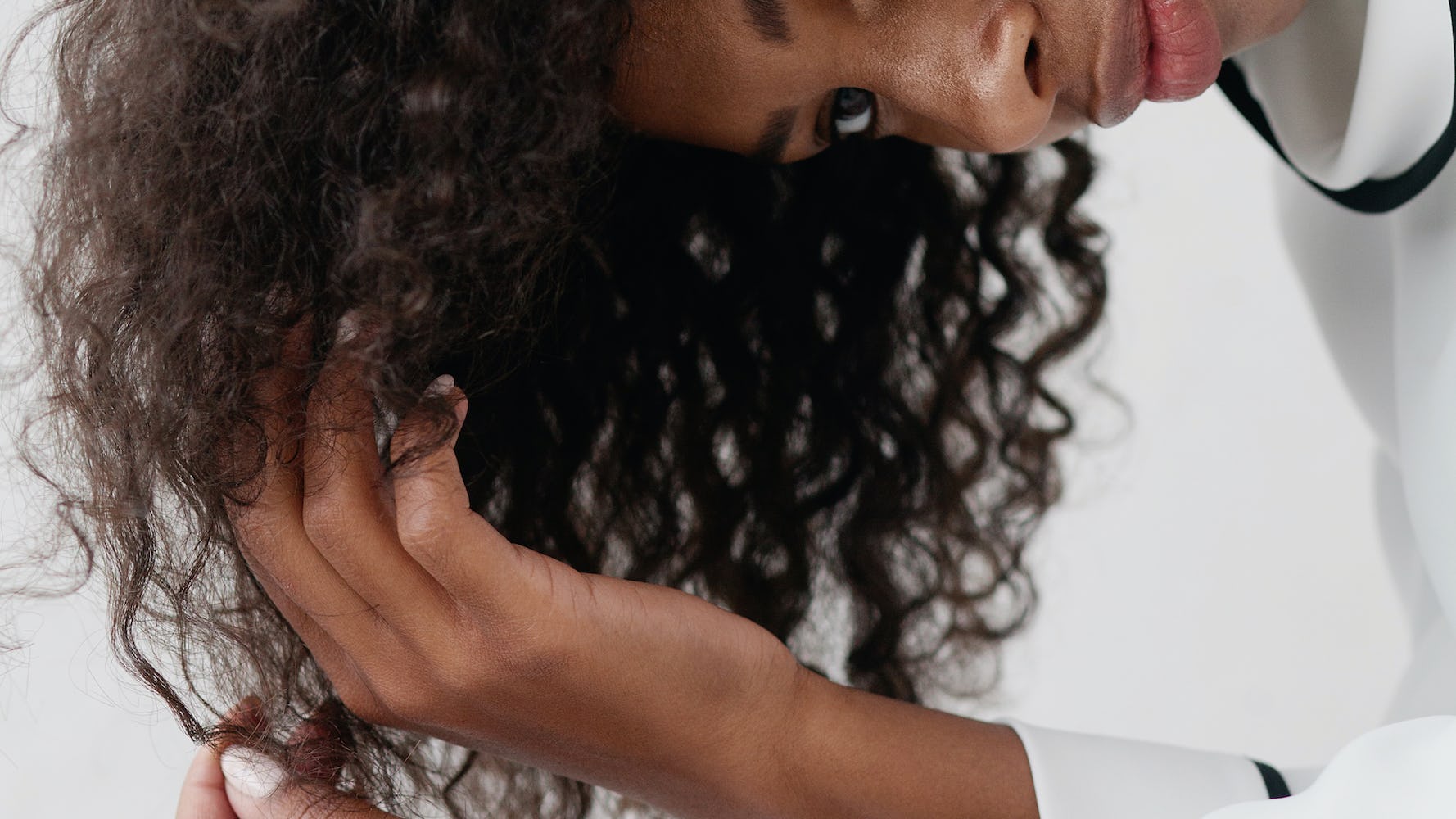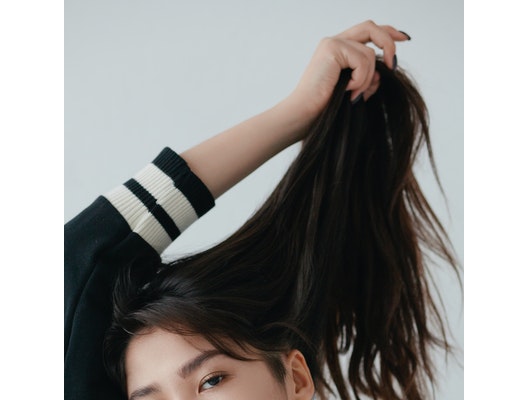Suffering From Scalp Buildup? Here’s How To Detox Your Hair And Scalp
Thespotlyte | July 25, 23

It’s easy to forget that our scalp is essentially an extension of our face. And, like the skin on your face, your scalp can become dry, itchy, and flaky if it’s not properly cleansed and moisturized. After all, the skin underneath our hair endures a lot, including layers of styling products, hair oils, and stress from regular heat styling. Just as you might add a gunk-annihilating clay mask to your weekly face care routine, swapping your shampoo for a detoxing scalp product could help promote cleaner, bouncier hair. Below, experts weigh in on getting rid of the gunk that may be coming between you and your best mane yet.
What Causes Scalp Buildup?
In short, more things than you might think. Hair products like mousse, gel, hairspray, and excessive dry shampoo are perhaps the most obvious offenders. (Imagine using heavy foundation on your face every day without an occasional deep clean!)
But hair products aren’t the only things to blame. Natural irritants, pollution, and sometimes even the water you’re using to wash your hair could warrant the need for a scalp detox. “The minerals that are present in what’s called hard water can deposit on hair and scalp making it feel waxy or tacky,” explains dermatologist Dr. Francesca Fusco.
In addition to product build up, Fusco also notes that some people are naturally prone to oilier scalps. Much like facial skin, oily scalp skin can lead to clogged pores and blocked hair follicles if it’s not properly cared for. If your scalp veers on the oily side, Fusco recommends using a shampoo formulated for your scalp type (try Kérastase® Specifique® Shampoo for Oily Scalp, $33). Even if your scalp isn’t oily, these formulas may still help to dissolve product build up.
Treat Your Scalp As Gently As You’d Treat Your Skin
Before you go scrubbing the hell out of your hair and scalp, keep in mind that the skin on our head can be just as sensitive as other parts of our bodies, so be gentle with it. “Introducing harsh ingredients like charcoals, or natural exfoliants like sugar scrubs, can rid the scalp of its natural oils and good bacteria, leaving it quite irritated,” says chief scientist, hair biologist, microbiologist, and trichologist for EvolisTM, Dr. Dominic Burg.
On a similar note, you may have seen videos of people scrubbing with designated scalp brushes. While the process can be weirdly mesmerizing, Burg says there’s no benefit to such intense exfoliation. “Like scalp scrubs, these brushes can actually cause irritation and disrupt the microbiome of your scalp,” he explains.
If you do go overboard with scrubbing, a product containing prebiotics and probiotics (try Unwash® Balancing Scalp Serum, $22) can help re-balance your scalp. Additionally, scalp oils like the Matrix® Biolage® R.A.W. Scalp Care Rebalance Scalp Oil ($30) can also helps stimulate, hydrate, and soothe any irritation or dryness caused by over-exfoliation. “[Up to]15% of our hair follicles are in the resting [or transition] phase at any given time and can be a little vulnerable,” Burg adds. “Harsh scalp rubbing can actually cause these to be pulled from the scalp before they are ready.”
Instead of intense exfoliation Burg recommends whittling down on your hair product usage in the first place. (Cutting back on heat styling and thermal protection products could be a good place to start.) When you do need to use products, he advises double-checking the labels for scalp-suffocating ingredients. Steer clear of silicones and sulfates, which can form a coating on your head and weigh the hair down, too.
One product you might want to actually add: a hair supplement. “I would recommend starting with a good hair vitamin that contains minerals, vitamins, and botanicals, so that nourishment and detoxification starts from the inside,” Fusco says.
[Editor’s note: As always, talk to your doctor before starting or stopping any new supplement.]

Check Your Technique
When it comes to busting through grime, your cleansing technique is almost as important as the formula you use. If you feel like you have an excess of product buildup, Burg recommends spending a full five minutes massaging a silicone-free shampoo containing apple cider vinegar (ACV), which can break through buildup without compromising hair hydration (try WOW® Apple Cider Vinegar Shampoo, $30). Fully rinse in lukewarm water — and repeat a second time for best results. For product junkies and oilier types, he says that a good, gentle cleanse of the scalp two to three times a week is all you really need to remove buildup and unclog pores.
While ACV isn’t a new cure-all (especially for many curly girls, who use it to purge heavier curl creams and gels), it offers a good deep clean without compromising the moisture levels of your strands. If you use a more extensive styling product lineup, try an apple cider vinegar rinse such as R+Co® Acid Wash® ACV Cleansing Rinse ($32) once or twice a month after your regular shampoo. For those who space out washes by weeks and not days, try adding a refreshing spritz like Klorane® Purifying Mist with Aquatic Mint ($18, available in April) to keep your hair and scalp feeling and smelling clean in between shampoos.
In addition to ACV, there are a couple of other ways to detox sans scrubbing. In the same way that the trend has been a game-changer for skincare, it can also help revitalize the scalp. One example is the Omorovicza® Revitalizing Scalp Mask ($75) — just like a mud mask would do for your face, it draws out impurities and sloughs off dead skin using calcium, magnesium, and salicylic acid. Then there’s the K-Beauty-inspired Kristin Ess® Scalp Detoxifying Bubble Mask ($14), which lifts away buildup and stimulates the hair follicles.
More Advanced Treatment Options
For skin conditions such as psoriasis, dandruff, or eczema that can cause a buildup of dead skin cells, the approach would be different. Fusco says to do an oil pretreatment, like Leonor Greyl® Paris Huile de Leonor Greyl ($59), prior to shampooing. Let it sit for at least an hour, or better yet, overnight. The oil will gently dissolve and loosen the dead skin, so when you shampoo, it will just wash away.
If you prefer to DIY your treatment, Fusco’s pick is coconut oil. “It penetrates deeply into the hair shaft, nourishing it, and diminishing protein loss that can come from everyday brushing or heated tool exposure,” she says. It’s also important to note that when treating dandruff using shampoo, it is important to use a conditioner afterwards that contains the same active ingredient. Otherwise, you are rinsing away the active ingredient in the shampoo. “Dove® DermaCareTM line for scalp and hair has complementary conditioners with the active ingredient of zinc pyrithione,” says Fusco.
Whichever detox method you use, it’s important to replenish your scalp afterwards. Burg recommends products containing aloe, vitamin E, and flaxseed oil, as well as baobab oil. Look for essential oils rich in antioxidants and anti-inflammatory components like lavender and rosemary (the latter of which can also help with dandruff). Burg also suggests adding some natural polyphenols into your regimen — such as those found in green tea and goji berries — as they make for a healthy scalp environment. Once your scalp is happy, the hair sprouting from it will be, too.
Some products were gifted to the author for the purpose of writing this article.
Product prices may vary from the time this article was written.
Allergan® may receive commission for purchases made through links in this article.






